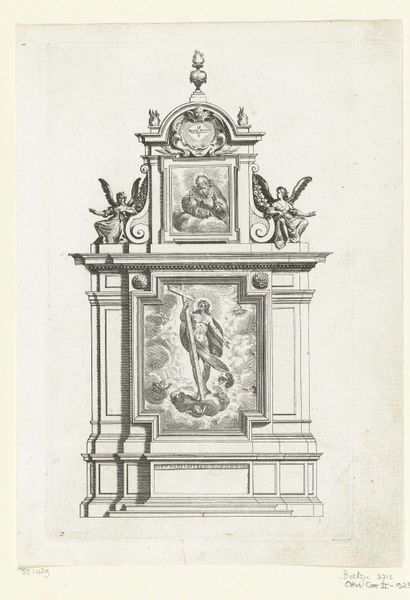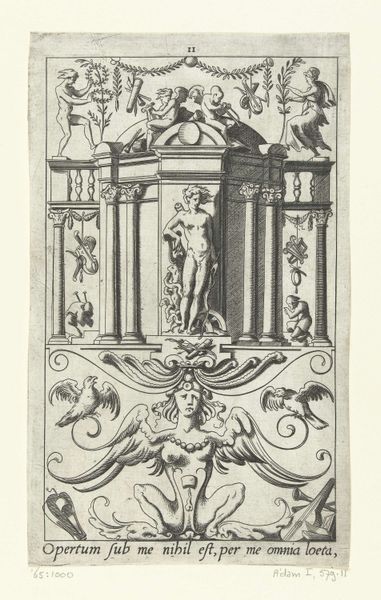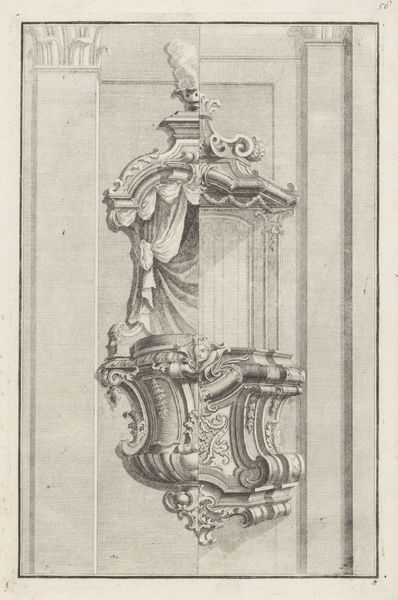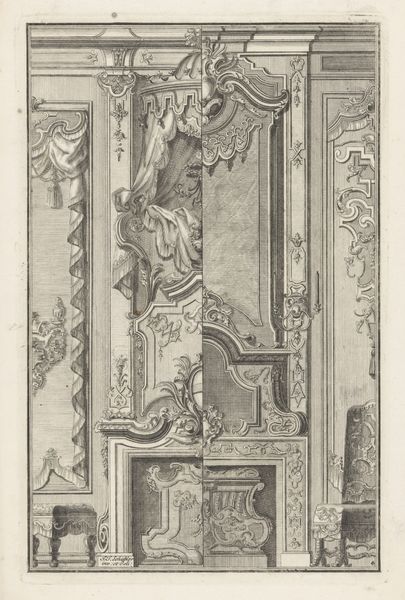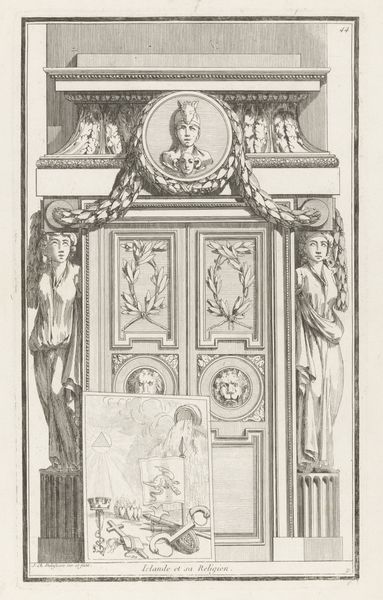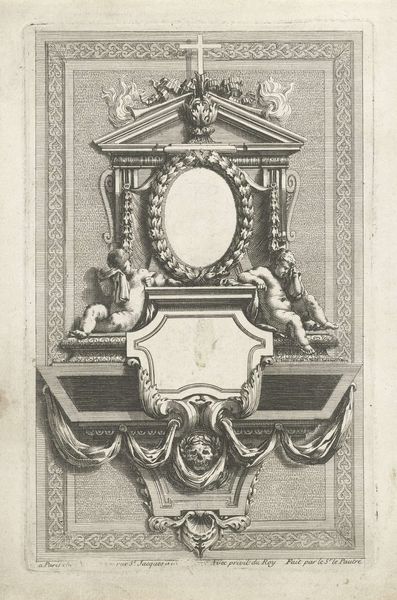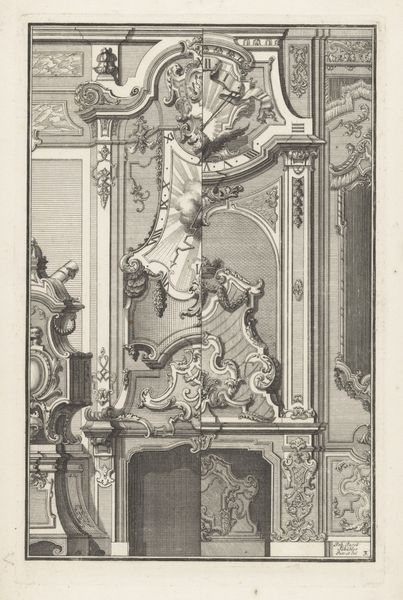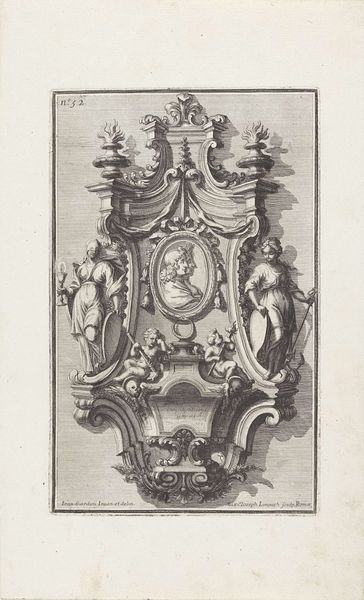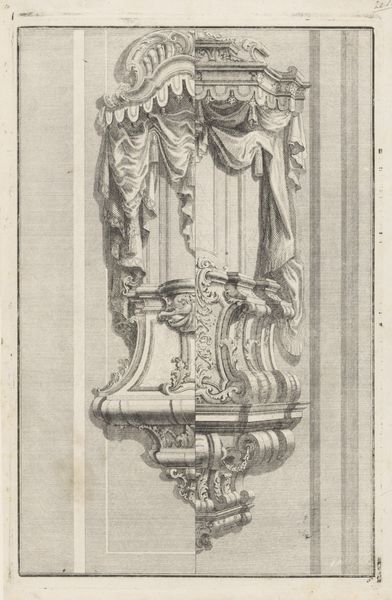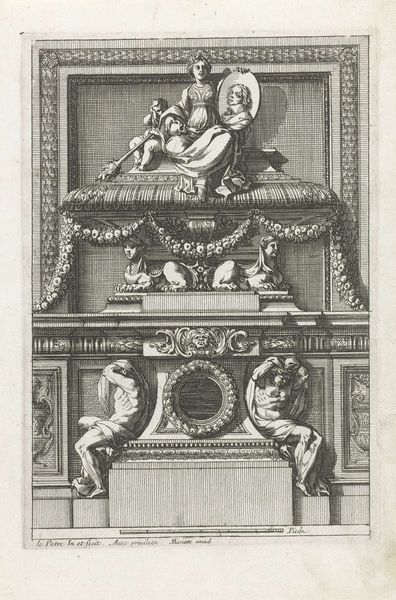
print, engraving
#
allegory
#
baroque
# print
#
mannerism
#
history-painting
#
engraving
Dimensions: height 223 mm, width 148 mm
Copyright: Rijks Museum: Open Domain
This etching, "Epitaph with Mourning Woman," was created by Jean Lenfant in the 17th century. Lenfant was active in a period when elaborate epitaphs were common, particularly among the elite. The image is packed with symbolism and invites us to consider the relationship between social status, death, and artistic representation. The weeping woman is perched atop a skull, flanked by mourning figures. The skull beneath her foot could represent death as a conquered foe, a common trope in memorial art. Produced in the Netherlands during its Golden Age, this etching reflects the Dutch Republic's complex relationship with death. The Republic's Protestant culture favoured more restrained displays of grief than its Catholic neighbours, yet elaborate family tombs and epitaphs were still commissioned by wealthy families. Historians can use sources, such as period sermons and family records to understand the cultural meanings that this image would have held for its original audience. Examining such objects helps us understand the institutional and cultural context of art in its time.
Comments
No comments
Be the first to comment and join the conversation on the ultimate creative platform.
